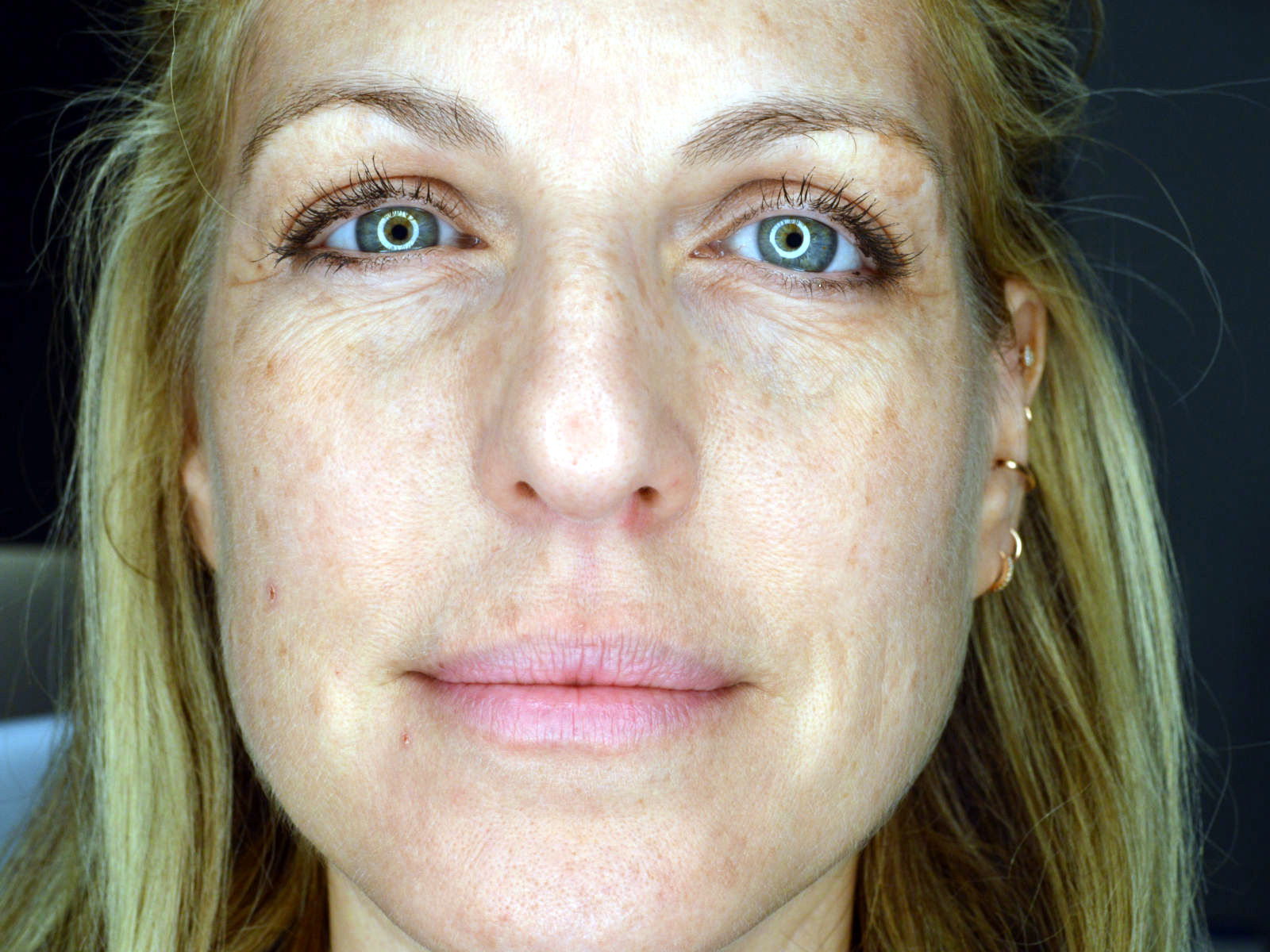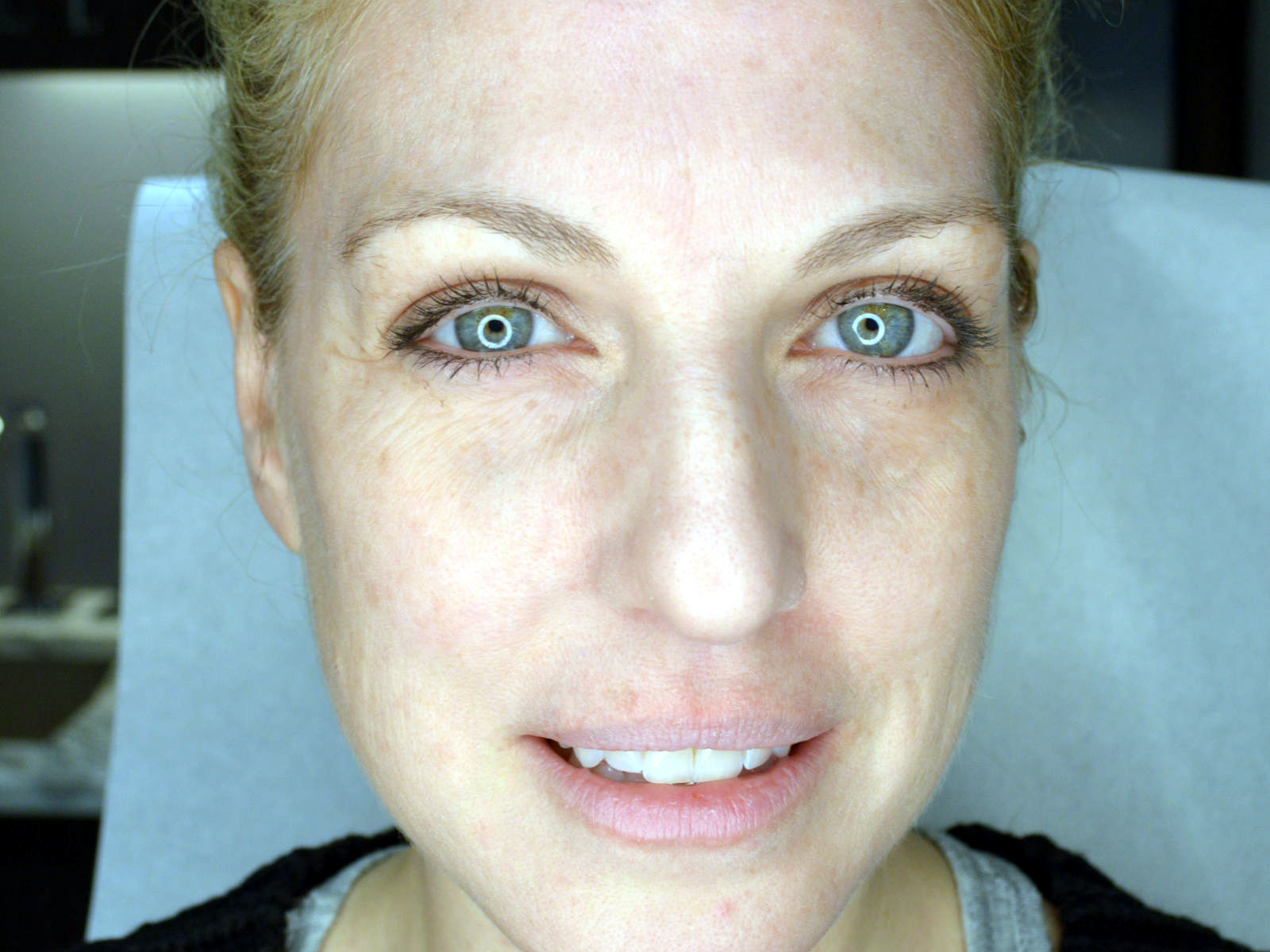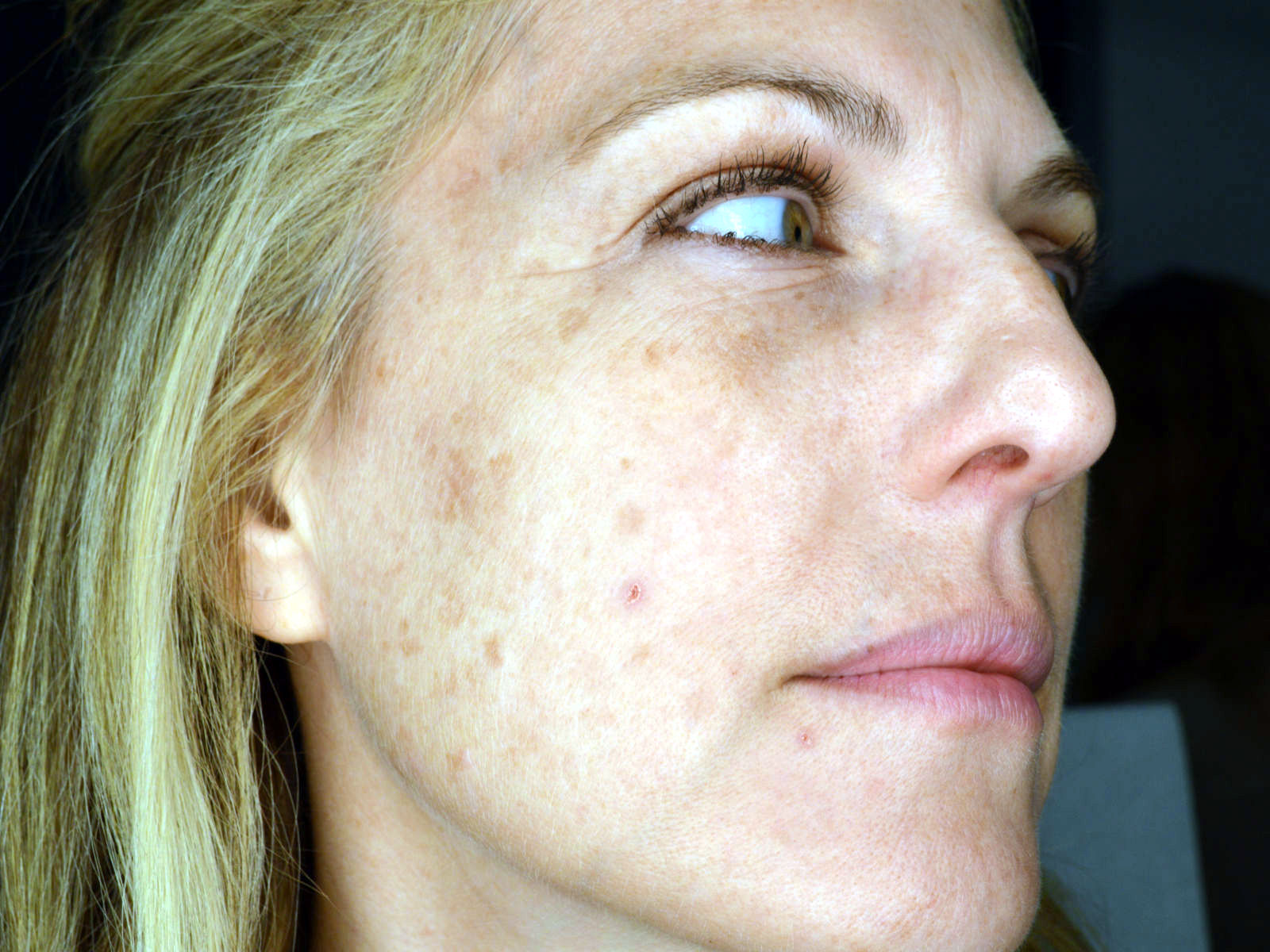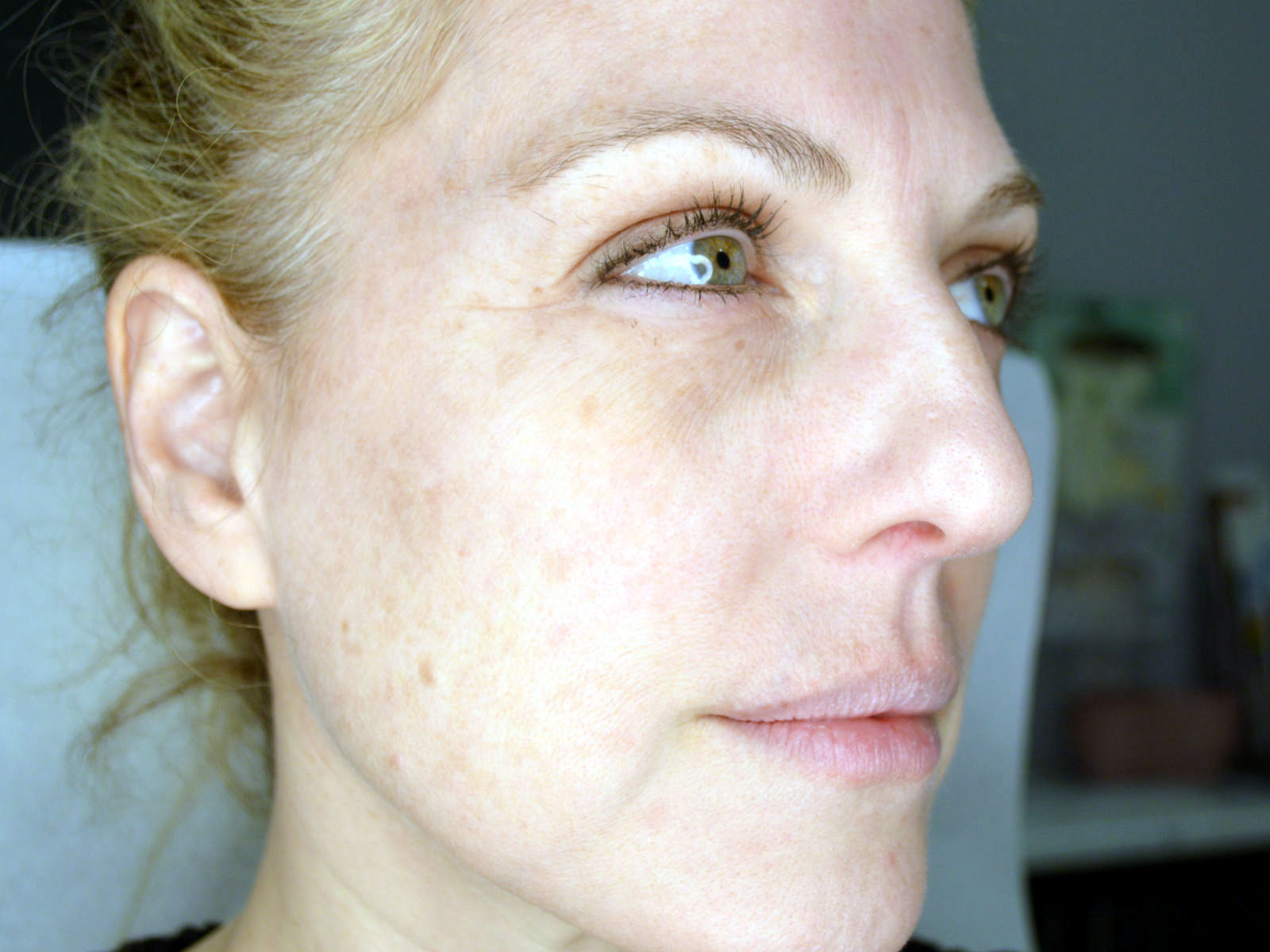Uneven Skin Tone
Age Spots & Sun Damage
Sun Damage
Sun damage, particularly from unprotected UV exposure, is a major cause of uneven skin tone, leading to dark spots, sunspots, and an overall uneven complexion due to the overproduction of melanin.
When skin is repeatedly exposed to the sun's UV rays, it produces more melanin, the pigment responsible for skin color, to protect itself. Sometimes, melanin production isn't even, resulting in patchy pigmentation, dark spots, and an uneven skin tone.
Sun damage can manifest in a variety of ways including as fine to medium wrinkles, sagging skin, freckles, uneven skin tone, and dark spots.
Other Factors
Besides sun exposure, other factors like hormonal changes (like during pregnancy), post-inflammatory hyperpigmentation (from acne or injuries), and aging can also contribute to uneven skin tone.
What are Age Spots?
Age spots — also called liver spots and solar lentigines — are small dark areas on your skin. They vary in size and usually appear on the face, hands, shoulders and arms — areas most exposed to the sun.
Age spots are very common in adults older than 30. But younger people can get them too, especially if they spend a lot of time in the sun.
Age spots can look like cancerous growths. But true age spots are harmless and don't need treatment.
You can help prevent age spots by regularly using sunscreen and avoiding the sun. Age spots may affect people of all skin types, but they're more common in people with light skin.
CO2 lasers are by far the gold standard for resurfacing skin to treat uneven skin tone, skin texture, sun damage & fine lines . It also is the gold standard treatment for acne scars, wrinkles, age spots, pores and loose or discolored skin. The TetraPRO CoolPeel delivers laser energy to your skin, but in a very controlled and specific way. Instead of treating 100% of your skin in one session, the TetraPro treats a percentage of your skin leaving “islands” of undamaged skin between. The islands of untreated skin boost recovery and lead to rapid healing. Over a series of treatment sessions, your entire face is gradually resurfaced.
When the CoolPeel energy is applied to your skin, the old and damaged skin is removed, then new collagen production is stimulated in multiple layers thereby leaving you with beautiful new youthful looking skin. Additionally, structural components of skin such as “elastin” are tightened for long-lasting benefits. We can further control the output of the TetraPRO CO2 laser to deliver higher energy where necessary to customize the treatment to your specific anatomy and desires. As with our entire practice, designing a bespoke treatment plan for every patient is paramount.
IPL is the treatment of choice for age spots.The CPW Vein & Aesthetic Center is excited to offer a proven safe and effective way to significantly reduce the signs of sun damaged skin as well as reduce the signs of aging. Lumenis M22 IPL Photorejuvenation is a breakthrough treatment that can address numerous skin conditions, without injuring the skin's surface. IPL offers a gentle, long-lasting solution for visible signs of skin damage that affect the way you look. It also combines dramatic improvement with virtually no down time. You'll walk out of the office and into the rest of your life without the wounds or downtime associated with surgery and laser resurfacing.
Aging is inevitable but Chemical Peels can make a difference in as little as 7 days. Specifically formulated to rejuvenate aging skin and help prevent future damage.
Soften fine lines and wrinkles
Restore a more even skin tone
Smooths away rough skin texture
Reduces the appearance of age spots
Brightens even the most stubborn areas of discoloration
Helps smooth skin texture and repair acne scars
Brightens dark areas left after an acne scar
Soothes inflammation and redness
CPW Vein & Aesthetic Center's Chemical Peels are very different from the standard. Everyone is different. We will spend have a consultation with you to discuss what is your best treatment option. So depending on what you’re trying to treat or restore it can typically take 3-6 painless treatments to reach your goal.
CPW Vein & Aesthetic Center offers different Chemical Peels suited to your needs:
VI Peels
VI Peels have been around for more than 10 years and have satisfied patients across the world. VI Peel is the peel which is formulated for pigmented, aging skin and the skin with acne scars. This peel will give you an amazing brightening and refresh to dull skin and skin with problematic dry or oily areas.
Your Peel For Pigmented Skin: Hyperpigmentation is a condition when patches of skin become darker than the surrounding skin. Although it is usually harmless, it can be difficult to treat effectively. The VI Peel can help restore the skin tone you deserve.
Reduces the appearance of age spots
Brightens even the most stubborn areas of discoloration
Smooths away rough skin texture
Your Peel For Anti-Aging Skin
The aging process can cause your skin to become lax, pigmented and rough. Sun exposure and environmental assault just adds to the problem. Aging is inevitable but the VI Peel can make a difference in as little as 7 days
Soften fine lines and wrinkles
Restore a more even skin tone
Smooths away rough skin texture
Your Post Treatment Care
Here is just some of the easy home-care regimen you will need to do right after the VI Chemical Peel. Of course, you will get all this information from us, too!
Leave the peel on for at least 4 hours. After this time you may apply sunscreen and makeup if desired
The peel on the body is slower than on the face, usually starting day 4-7 and taking up to 10 days or more.
Post VI Peel - Important Information
Refrain from strenuous activities for 72 hours.
The post peel towelettes are a crucial part of the peeling process and must be applied on the 1st and 2nd days
A small percentage of patients say that after using the post peel towelettes (especially the first night) they experience some itching. If itching is extreme, wash the face to remove the solutions or the Post Peel Protectant may be applied after 10 minutes
The Post Peel Protectant may sting upon application, but stinging quickly subsides
Avoid sun exposure during the peeling phase. The use of sunscreen is essential
During the week following the peel, you may use a gentle cleanser
Do not cleanse with a Clarisonic Brush, do not use scrubs until the peeling process is complete (usually in 6-7 days)
NEVER FORCE OR PEEL THE SKIN OFF. Such actions may cause irritation, scarring or pigmentation
The skin will slough when washed morning and night. If you would like to trim excessive skin from the face, a small pair of scissors is acceptable
PCA Peel®
PCA Peel® with Hydroquinone & Resorcinol Exfoliating Treatment
This peel has no downtime and you can return right to work! Most patients do not have any excessive peeling for the peel works slowly over the course of two weeks. This peel will even skin tone and provide more exfoliation for oilier, thicker and more resilient skin types. It is effective on sun damaged and thickened skin. It is also excellent for those with active/cystic acne and asphyxiated skin (dry on the surface, oily underneath).
Our solutions are blends formulated with many ingredients including lactic acid, ascorbic acid (vitamin C), plumping phytohormones and kojic and azelaic acids to produce dramatic results without the discomfort and downtime associated with traditional Chemical Peels. You can return to normal activities immediately afterwards.
The after-instructions with the PCA peels are very simple: remember to use sunscreen, apply plenty of moisturizer and use a gentle cleanser.
When to see a Doctor
Age spots are usually harmless and don't require medical care. Everyone should annually visit their general dermatologist for a full body skin check. Have your doctor look at spots that are dark or have changed in appearance. These changes can be signs of melanoma, a serious form of skin cancer.
It's best to have any new skin changes evaluated by a doctor, especially if a spot:
Is darkly pigmented
Is rapidly increasing in size
Has an irregular border
Has an unusual combination of colors
Is accompanied by itching, redness, tenderness or bleeding
























